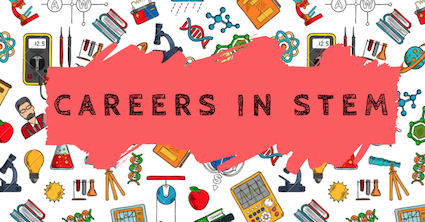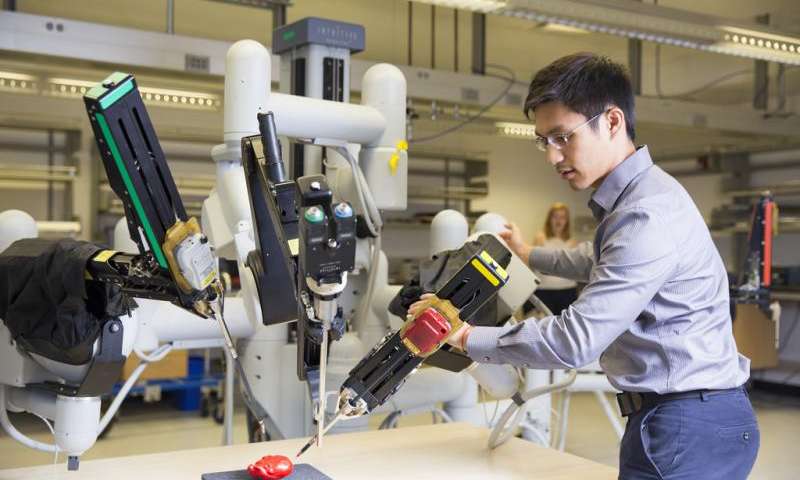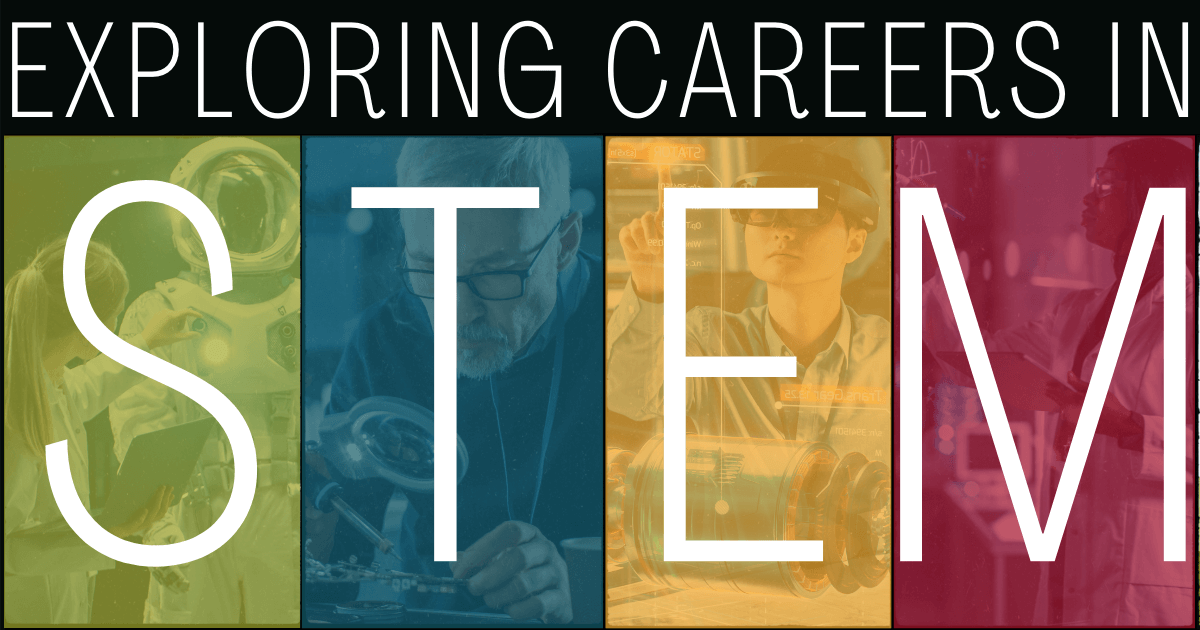At Eduporium, our overarching mission revolves around preparing every child for their future. We work with teachers to provide affordable access to meaningful technologies that help their students develop the most important hard and soft skills. We also preach about the importance of hands-on, active, and inquiry-based learning experiences. In our views, these are what allow kids to see our real world in their learning as much as possible. STEAM education is also a huge part of 21st century instruction and we know how vital these experiences are. The hard and soft skills that children learn throughout elementary, middle, and high school often help them transition into a future career and, for more and more of them, that career might be very closely related to STEM.
Generating Interest in STEM Careers
One reason there are so many STEM jobs is because there is not enough qualified talent. This is partly due to many children losing interest in STEM early on in their lives for a variety of reasons. Some believe they're not smart enough, some fall victim to stereotypes, and others genuinely don't have a desire to pursue it. Of course, this is a bit of a problem because, despite the overwhelming presence of STEM around the modern workforce, there never seems to be quite enough people to fill every job. STEM careers have always been important, however, as professions like doctors, dentists, and scientists are all vital for our society. Now, as computer technology continues to advance and things like AI are more common, it’s become important for people to know how to enter some of these emerging STEM fields.
Career fairs and job showcases.
One way educators try to generate more interest in STEM is with school- or district-wide training programs. Similar to internships, career coordinators can set up on-the-job experiences to help students observe how STEM professionals work. STEM has ballooned in the last decade and many careers in this bucket are now much more extensive. Teachers could use this to their advantage and make it clear that it’s fairly likely kids would be able to find a STEM path that aligns with something they are passionate about. They should also stress how STEM work isn't reserved for the smartest of the smart. Sure, intelligence can be important but many of today’s STEM jobs require creativity, collaboration, and analytical skills. Plus, these professionals also need to be willing to make mistakes and solve problems creatively.
New technology means new job opportunities.
If students are willing to put in the work, chances are that there's a job in STEAM for them. The emergence of newer disciplines, like 3D printing, for example, have created various types of productive and necessary uses for technology. It's relevant in the engineering world, the medical field, in sports, and even for culinary science. Yes, science, technology, engineering, and math all collectively make the world a better and more efficient place but we also need people to be skilled in these areas. Different kinds of teaching practices or different kinds of educational experiences can help many students open their eyes to the power of STEAM learning and hopefully generate that interest in STEM that's sometimes lacking.

Connecting STEM Context and Careers
STEM jobs are among the fastest-growing opportunities across our economy. The amount of STEM-related jobs, in fact, sometimes contributes to the demise of lots of other traditional careers. These jobs often even come with better pay than many non-STEM jobs that require the same amount of education. Not too many college graduates pursue STEAM careers either, so you'd think this would encourage more students to try STEM majors. The prospects of obtaining a high-paying STEM job with less competition is also attractive. Only about one third of undergraduate degree holders over the age of 25, however, have a STEM degree. But, since STEM jobs are growing so rapidly, it’s important to have strong STEAM skills. In turn, students will be better equipped to eventually fill these jobs and thrive in the future.
STEM careers and today's booming fields.
The downside surrounding common STEM careers is a larger disconnect between available jobs and the amount of students pursuing any necessary degrees. Statistics show that, between 2010-20, STEM jobs continued to expand more than jobs within other fields. The number of jobs in all occupations, for example, had increased by 14 percent (prior to the pandemic). Mathematics jobs increased by 16 percent. Computer systems analyst jobs grew by 22 percent. Systems software development jobs had increased by around 32 percent. Medical scientist jobs increased by 36 percent. And, biomedical engineer jobs climbed by over 60 percent. These data points come from the U.S. Education Department and indicate that, while various job opportunities are trending back up overall, the job opportunities in STEM are booming more than others.
STEM careers and a bright future.
To help their students enjoy STEM and ultimately fill more openings, educators need to help them see the connection between STEM and a promising future. But, at the same time, we're not saying that pursuing a non-STEM endeavor would negatively affect their futures. Simply offering students regular encouragement, however, could affect the likelihood of them pursuing STEM. Graduates can obtain STEM jobs with all sorts of degrees, including Masters degrees, Bachelor’s degrees, two-year degrees, or certificates. With all these available STEM careers and paths for students, it seems there should be more qualified graduates who are ready to step into these roles but the gap still persists. We can't be certain but it seems relatively likely that generating some more buzz around STEM careers can be one way to inspire students.
Career Opportunities for Robotics Specialists
STEM careers, as we’ve discussed, are in so many industries and many new ones are still emerging. While it’s not all that new, working in robotics is certainly more prevalent in the last few years. Since learning with classroom robots is great for introducing children to STEAM, this could certainly affect how they'll view the economy. Plus, many teachers see it as a fun way to create hands-on learning. Using robotics in the early grades helps kids learn coding skills and there are other reasons it's beneficial as well. For starters, there's a good chance kids will need to be proficient with programming in the future. But, there are other directions these types of careers could take them, too. And, although you could probably identify various examples of robotics use in the real world, there might be many more than you realize.
Career options in STEM and robotics.
The first thing you may think of is a robot exploring another planet, as a concierge worker, or for the military to help to diffuse dangerous situations. In reality, STEM professionals use robots for more than that and, as they continue to advance in terms of efficiency, new uses may emerge. Some of the ways we use robotics include deploying them at opposite ends of the world. Scientists may even use robotics tools to potentially explore unreachable depths of the ocean or other hostile environments. Another example is using them to design satellites or rovers for exploring harsh areas of Earth or space. Another niche area is in humanitarian robotics. This specific branch involves how human interfaces will work with robots and the ethics involved.
Engineering, research, and career variety.
Not only are robots constantly evolving, the components for constructing them are as well. Lots of robotics careers might involve designing some specialized robot parts, like the gripping technology that allows them to handle items. Robots are also used within the medical fields and they need skilled workers for designing surgical bots and performing trials. Then, there’s the research side of robotics, which encompasses a great deal of responsibilities. Robotics holds so much potential in maximizing efficiency and optimizing assorted work environments but we don’t yet know everything about how different methods will impact engineering, deployment, and consequences. Of course, this makes the research side of things a very intriguing career option (like the rest of these examples) for anyone who's interested in getting more involved with robotics.

Preparing Students for Next-Gen Tech Careers
Technology has helped advanced potential STEM careers to new heights and created completely new job opportunities for today’s students. It also helps advance what educators can provide for these students in the classroom. Internships are also good for students to see how well they do something or learn skills for a particular field. While internship programs aren't available across all high schools, however, technology-based learning and CTE are a lot more common. It’s through these kinds of hands-on, collaborative, and trial-and-error endeavors that students really learn. Experiential learning is great for discovering potential STEAM careers for students who want to solve tomorrow's most complex challenges. It's also important for building the aptitude to develop the necessary skills.
Creating paths to STEM careers.
Giving students access to purposeful technology is great but their teachers also often need PD courses on integrating and maximizing this technology, especially if they want to illustrate potential STEAM careers for kids. If they’re willing to learn, this is very much an option whether they’re only looking to add some hands-on coding to their classrooms or larger scale projects in science labs and makerspaces. Through all these learning experiences, educators can create better pathways for students in elementary or middle school to in-demand STEM careers. Making sure children understand how technology could affect various future job prospects is also crucial. And, using this to inspire them to work hard to understand all the ways they could train for some of the highest paying STEM jobs is important as well.
Ensuring opportunities are equitable.
For teachers, priming students for potential future STEM careers starts with instilling the drive to innovate. First and foremost, this often involves shaping their attitudes on preparing for their futures. If more STEAM experiences penetrate all schools in all locations and at all economic levels, that would be ideal. Of course, there are also factors beyond what education leaders can control. The gap that lingers when students can't access STEM experiences, however, affects their eventual ability to break into tech jobs. Even without a lot of technology resources to work with, there are additional paths to creating impactful experiences. Starting with something simple, like a 3D printer, can create opportunities for students to develop tech skills. It can also help them design solutions and work on developing the exact skills they’ll need for the future.
Preparing Students for Careers in Tomorrow’s Economy
The resources classroom instructors have for preparing students for a possible future in tech aren't always ideal. We understand that school leaders do all they can and sometimes they’re stretched pretty thin when trying to provide innovative learning opportunities for thousands of students. There are even some other things they can do, however, that aren’t necessarily completely centered on using technology. Much of this learning is still hands-on and can definitely give students a leg up for their future. Technology has changed the economy and, in many towns across the country, that can affect instructional strategies. In agricultural towns, for example, high school students had regularly been taught farming techniques. Since agricultural work is now largely automated, however, some educators have pivoted to teaching about that technology, including how to control, maximize, and even program it.
Courses with a focus on STEM careers.
Technology classes are now a given in many schools but students don’t always learn enough from these opportunities. It depends a lot on the technology they are using and how it aligns with their skill levels and future challenges. Take elementary children, as an example. They’d benefit more from coding with a simple robot than they would from designing a robot. Exposure to technology is a process and it is not necessarily linear. It’s different for every student but one thing that’s at least similar is that it can help them see things in new ways. Ideally, district leaders can provide students with devices for practicing coding in the classroom or at home. Many robotics tools are also compatible with compact devices, which are reasonably priced.
Technology access can benefit everyone.
Using technology throughout their classes also helps improve outcomes for students who are considered impoverished, research has shown. Whether by enjoying routine access to computers, learning coding, or even eventually practicing 3D printing, the exposure these students receive can have an enormous impact on their ability to earn a tech job. If their school environment isn't ideal for using new technology, however, then the likelihood they develop the necessary fluencies decreases. There is also the certification route, in which students complete relevant certificate programs. The certifications go a long way towards helping them break into the tech workforce. They also give them real, on-the-job experiences in many cases. And, since our economy is full of STEM jobs, school leaders should consider doing this whenever possible.
For the latest EdTech, STEM, and 21st century education news, follow us on Twitter and Instagram. Like us on Facebook, too, or sign up for our newsletter for announcements on the best EdTech deals around!



